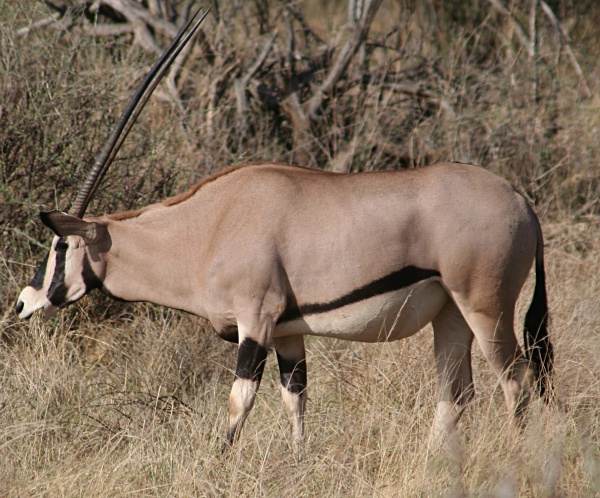Facts About East African oryx
The East African oryx, also known as the beisa, is a striking species of antelope native to East Africa. There are two subspecies: the common beisa oryx, which roams the Horn of Africa and areas north of the Tana River, and the fringe-eared oryx, found in southern Kenya and parts of Tanzania. While they were once thought to be a subspecies of the gemsbok, they are now recognized as genetically distinct, with the beisa having a diploid chromosome count of 56 compared to the gemsbok's 58. Unfortunately, the species is listed as Endangered by the IUCN.
Standing about a meter tall at the shoulder and weighing around 175 pounds, the East African oryx is easily recognizable by its sleek grey coat with a white underside and distinctive black stripes. Both males and females sport thin, straight, ringed horns. These animals thrive in semi-desert and steppe environments, where they graze on grasses, leaves, fruit, and buds. Remarkably, they can regulate their body temperature to conserve water.
East African oryxes typically form herds ranging from five to forty individuals. In these groups, females usually take the lead, while a large male guards the rear. Some older males prefer a solitary life, occasionally pairing up with females that are ready to breed.

 Eritrea
Eritrea